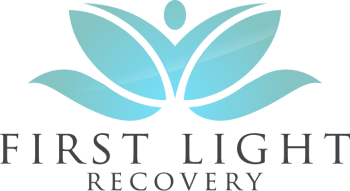What is Trauma?
Trauma is an emotional response that occurs after exposure to a terrible event. It can result in unpredictable emotions, flashbacks, relational issues and potential physical symptoms like headaches or nausea.
There are three types of traumas:
- Acute trauma is trauma that occurs after a single event such as a car accident or witnessing a violent event.
- Chronic trauma is repeated and prolonged, examples are domestic violence, sexual abuse, or extreme situations like war.
- Complex trauma is when an individual is exposed to various multiple traumatic events that are severe and pervasive like abuse or severe neglect.
Trauma affects our autonomic nervous system that is responsible for survival. Due to the overwhelming event, the threat response becomes stuck.
What is PTSD, Diagnosis and Symptoms?
PTSD stands for post-traumatic stress disorder. It is recognized in the Diagnostic and Statistical Manual of Mental Disorders (DSM-5). Is a psychiatric disorder that occurs in individuals whom have been witness to or experienced a traumatic event. During World War I it was referred to as “shell shock” and in World War II as “combat fatigue.” Though PTSD does not just occur with individuals exposed to war. Individuals with PTSD experience intense and disturbing thoughts and feelings related to their trauma, so this can be any life altering terrible event. It does not just occur firsthand either, it can occur indirectly, such as a person learning about a violent death of a loved one or repeated exposure to horrible details of a trauma such as a police officer exposed to details of child abuse cases.
Symptoms:
- Intrusion – repeated thoughts, involuntary memories, nightmares, flashbacks
- Avoidance – avoiding people, places, activities, objects, and situations that may trigger the traumatic memory
- Alterations in cognition and mood – memory loss of aspects of the trauma, negative or distorted thoughts, ongoing fear, anger, guilt, shame, lowered interest in activities previously enjoyed, feeling detached, void of happiness or satisfaction
- Alterations in arousal and reactivity – irritability, anger outbursts, reckless behavior, suspicious, easily startled, problems concentrating, disturbed sleep
Diagnosis:
- Symptoms must last for more than a month and must cause significant distress or issues in daily functioning. Individuals often experience symptoms within three months of the traumatic experience though symptoms may appear later and may persist for years. Co-Occurring issues often become present with PTSD such as substance abuse, depression, and anxiety.
Prevalence and Statistics
PTSD effects 3.5% of U.S adults. It is estimated that one in 11 people will be diagnosed with PTSD in their lifetime. Statistically, women are twice as likely to have PTSD than men. The ethnic groups of U.S. Latinosfs, and American Indians are disproportionately affected with higher rates of PTSD than non-Latino whites. Over 50% of adults may experience emotional abuse in their life.
PTSD From Emotional Abuse

PTSD can originate from various forms such as physical abuse, domestic violence, community violence, physical neglect, emotional abuse, elder abuse, and sexual abuse. PTSD is an emotional response to a psychological trauma. Emotional abuse causes PTSD when it is a pattern that creates fear and often is used to control. It centers around manipulation, isolation, is demeaning or threatening, intents to shame and humiliate.
Warning Signs:
- Controlling or monitoring time spent with others, or money spent
- Threats toward safety, property, or others
- Extreme jealousy, accusations and/or paranoia
- Constant criticism
- Conditional care based on a person’s choices
- Refusing time spent alone
- Instilling self-doubt and worthlessness
- Gaslighting – questioning your own competence and perceptual experience
Treatment and Coping Skills
- Cognitive Processing Therapy – facilitated by a psychotherapist, individuals confront their distressing memories and emotions to modify their painful negative reactions resulting in shame and guilt.
- Prolonged Exposure Therapy (PE) – This therapy is intense and uses repeated and detailed imagery of the trauma or progressive exposures to “triggers” in a safe and controlled way to transfer control back to the individual.
- Group Therapy – This therapy is utilized for individuals to process their trauma through shared experiences in a non-judgmental environment and understand their reactions and feelings to be normalized.
- EMDR – EMDR is eye movement desensitization and reprocessing. The treatment focuses reconnecting the traumatized person in a safe and measured way. It is a psychotherapy that accesses traumatic memories so that the information processing is enhanced.
- Seeking Safety – This therapy is present-focuses and helps individuals attain safety in their relationships, thinking, behavior, and emotions and can be conducting in individual and group settings.
- Medication – antidepressants in conjunction with psychotherapy help individuals participate more effectively in treatments. They can lower anxiety, depression, improve sleep and agitation.
- Other Alternative Treatments
- Acupuncture
- Animal assisted therapy




